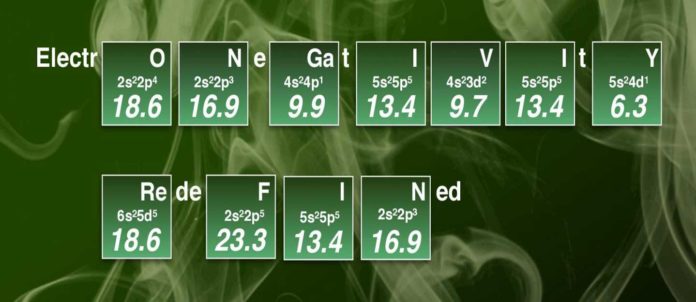Martin Rahm from Chalmers University of Technology, Sweden, has redefined the concept of electronegativity with a new, more comprehensive scale. His new definition is- the average binding energy of the outermost and weakest bound electrons – commonly known as the valence electrons.
By utilizing electronegativity scales, one can foresee the approximate charge appropriation in various particles and materials, without expecting to depend on complex quantum mechanical computations or spectroscopic examinations. This is essential for seeing a wide range of materials, just as for structuring new ones.
Utilized every day by scientists everywhere throughout the world, the idea originated from Swedish scientific expert Jöns Jacob Berzelius’ examination in the nineteenth century and is generally educated at a secondary school level.
For the new definition, Martin derived the values by combining experimental photoionization data with quantum mechanical calculations.

CREDIT
Johan Bodell/Chalmers University of Technology
He said, “By and large, most elements relate to each other in the same way as in earlier scales. But the new definition has also led to some interesting changes where atoms have switched places in the order of electronegativity. Additionally, for some elements, this is the first time their electronegativity has been calculated.”
For example, compared to earlier scales, oxygen and chromium have both been moved in the ranking, relative to elements closest to them in the periodic table. The new scale encompasses 96 elements, a marked increase from previous versions. The scale now runs from the first element, hydrogen, to the Ninety-sixth, curium.
One inspiration for the specialists to build up the new scale was that, although a few unique meanings of the concept exist, each is just ready to cover parts of the periodic table. An extra test for scientists is the way to clarify why electronegativity is sometimes unable to anticipate chemical reactivity or the polarity of chemical bonds.

CREDIT
Martin Rahm/Chalmers University of Technology
A further advantage of the new definition is how it fits into a wider framework that can help explain what happens when chemical reactions are not controlled by electronegativity. In these reactions, which can be hard to understand using conventional chemical models, complex interactions between electrons are at work.
What ultimately determines the outcomes of most chemical reactions is the change in total energy. In the new paper, the researchers offer an equation where the total energy of an atom can be described as the sum of two values. One is electronegativity, and the second is the average electron interaction.
The magnitude and character of these values as they change over a reaction reveals the relative importance of electronegativity in influencing the chemical process.
There are endless ways to combine the atoms in the periodic table to create new materials. Electronegativity provides a first important indicator of what can be expected from these combinations.
Martin Rahm said, “The scale is extensive, and I hope it will greatly affect research in chemistry and material science. Electronegativity is routinely used in chemical research and with our new scale, a number of complicated quantum mechanical calculations can be avoided. The new definition of electronegativity can also be useful for analyzing electronic structures calculated through quantum mechanics, by making such results more comprehensible.”
The study is published in the Journal of the American Chemical Society.
